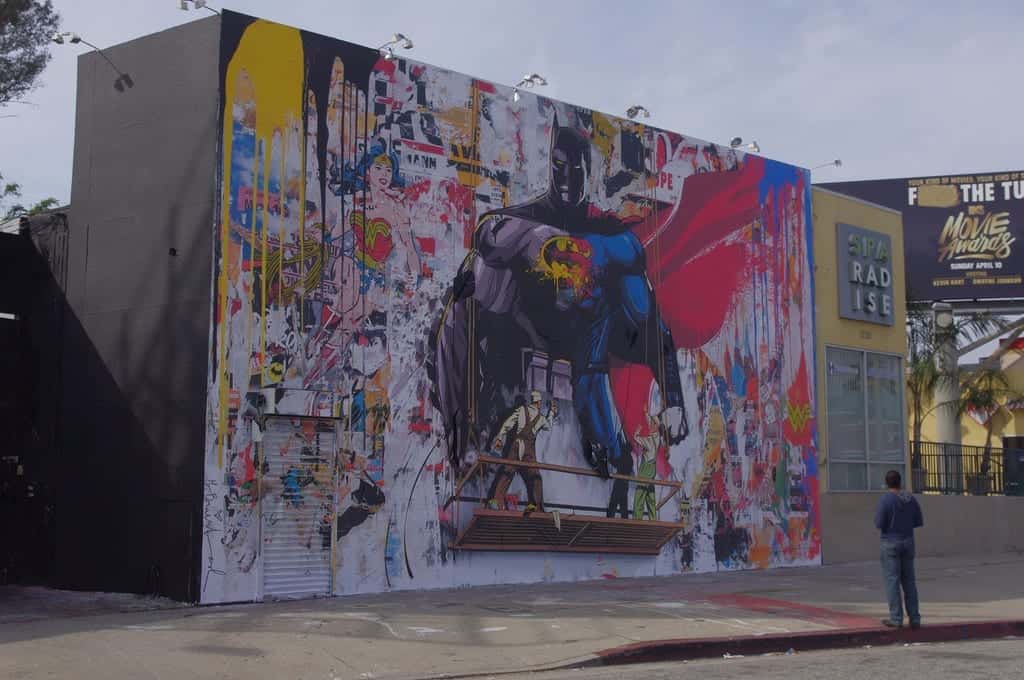Save Martha

author: credence mcfadzean | contributor
Even now, as the seasoned, crossfit/dudebro Batman featured in this film, he is experiencing a visceral reaction to the trigger word.
At the climax of Batman and Superman’s highly anticipated fight, during their less-than-anticipated recent film Batman v. Superman, a surprising turn of events abruptly ends the hyped-up confrontation. [SPOILERS] Batman, having just deployed his “You were never a god/ You were never even a man” mic drop, pins Superman down with his boot, crushing his throat, and poises to deliver the final deathblow with the glowing kryptonite spear that has just drawn blood from this impenetrable ‘not-a-man.’ “Surely only a deus ex machina, the most dreaded of lazy plot points, can save Superman now?” the audience asks. As the audience shushes itself so that it can actually watch the movie, it soon has its collective mind blown. We discover that Bruce Wayne’s equally impenetrable resolve actually conceals a vulnerability of its own. “You’re letting him…kill Martha!” Superman is finally able to sputter. Affleck’s Batman ceases his deathblow, glances around confused, and utters, “What?”
What follows is a sequence arguably qualifying as the emotional heart of the film. We are treated to a flashback—the twenty-seventh time portrayed on the big screen—of Bruce Wayne’s parents being murdered. We are shown Martha’s pearl necklace, a symbol of the Waynes’ comfortable station in life, entangled with the gun and utterly shattered as it fires in her face. The young Bruce’s anguished reaction is edited with the famous shot of him falling through the earth into the realm of bats that will transform his fear into his primary weapon. Through the associative language of the camera, we are told that Bruce is falling, he is always falling, and it is because of this terrible moment of loss. This is the factor forever motivating his desire for power and domination over criminals (or Supermen). It informs all the good he does, as well as all his misguided evil. And all this is tied around the shot of Thomas Wayne’s sideways face as he, collapsed and dying, utters that name: “Martha.”
Through this powerful sequence, the audience remembers just how emotionally devastated Bruce still is by the trauma and helplessness he felt on that day. Even now, as the seasoned, crossfit/dudebro Batman featured in this film, he is experiencing a visceral reaction to the trigger word. Affleck does a great job portraying a loss of control that leads to debilitating non-action. He is frozen in his trauma. The misunderstanding is quickly wrapped up when Lois Lane runs to the side of her beat-up BF and explains what the audience already knows: the two characters’ mothers shared the same name. This coincidental connection becomes the focal point that unites them. The parallel bears many implications about what differs in these two lives—Kal-El was initially orphaned too, his whole planet destroyed, but he has known the love of his new parents, his new home. Now the living Martha is being held and tortured by Lex Luthor, poising Batman to possibly right two wrongs simultaneously: he can undo this super-feud by saving his new friend’s mother, an act symbolically weighted by the loss of his own Martha and his helplessness then.
Many have criticized this plot point and its relation to the overall flawed film it lives in. Some have found the scene awkwardly executed, the Caped Crusader’s reaction puzzling, or the fact that the Man of Steel would refer to his mother as “Martha” convoluted (as though he’s committed to revealing his secret identity in every superfight). I think the scene works quite well, and that, after what has basically been a commercial for toxic masculinity—Batman at one point rips a sink out of the wall to use as a head-bashing instrument—it’s refreshing to have these two guys just be sad about their moms together. Either way, a larger point is raised regarding what this scene brings to the developing conversation of mental wellness. Batman has always been a character haunted by trauma, and it’s a significant choice to pivot the entire conflict of this “VS” film on a triggering episode. By doing so, a mutual strength is defined between superheroes and those struggling with mental wellness. Superheroes are further humanized through this vulnerability, but it is an element that is empowering, too. Batman is strong because of this factor of struggle, because of the trauma that suffuses his identity. It is the catalyst that changes the entire trajectory of this film through a moment of heightened empathy. And that’s at least one good thing to come from this ‘less-than-perfect’ movie.










